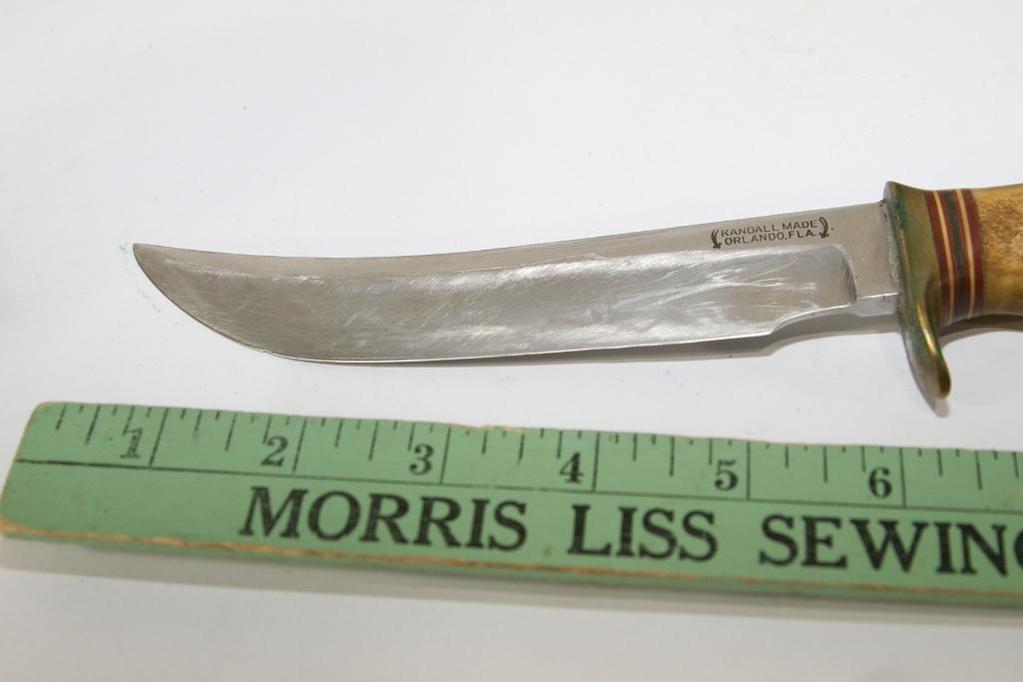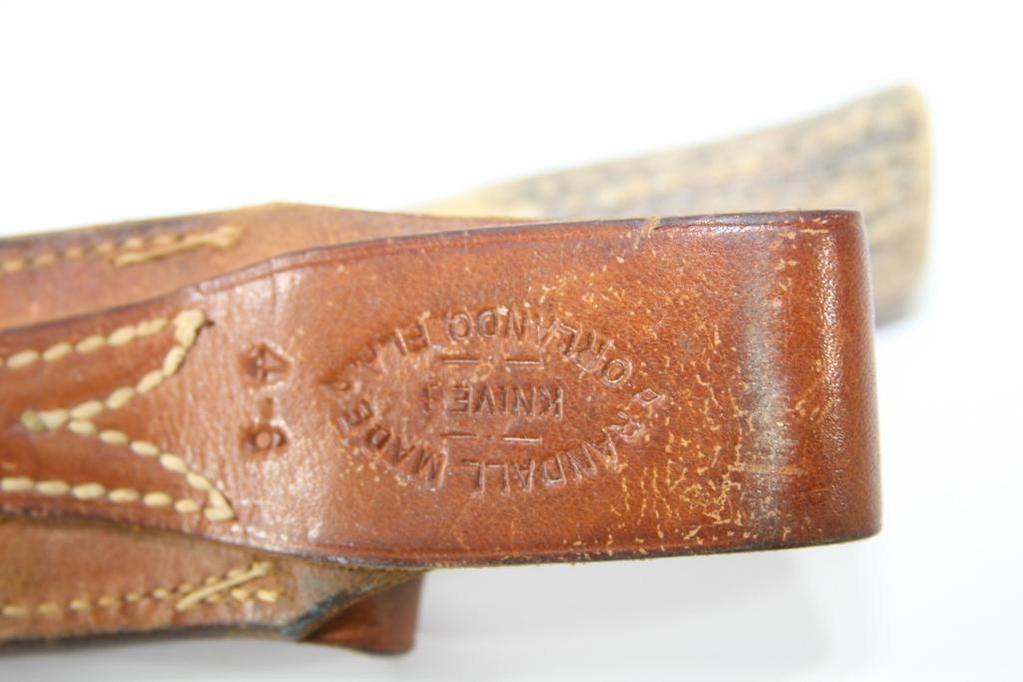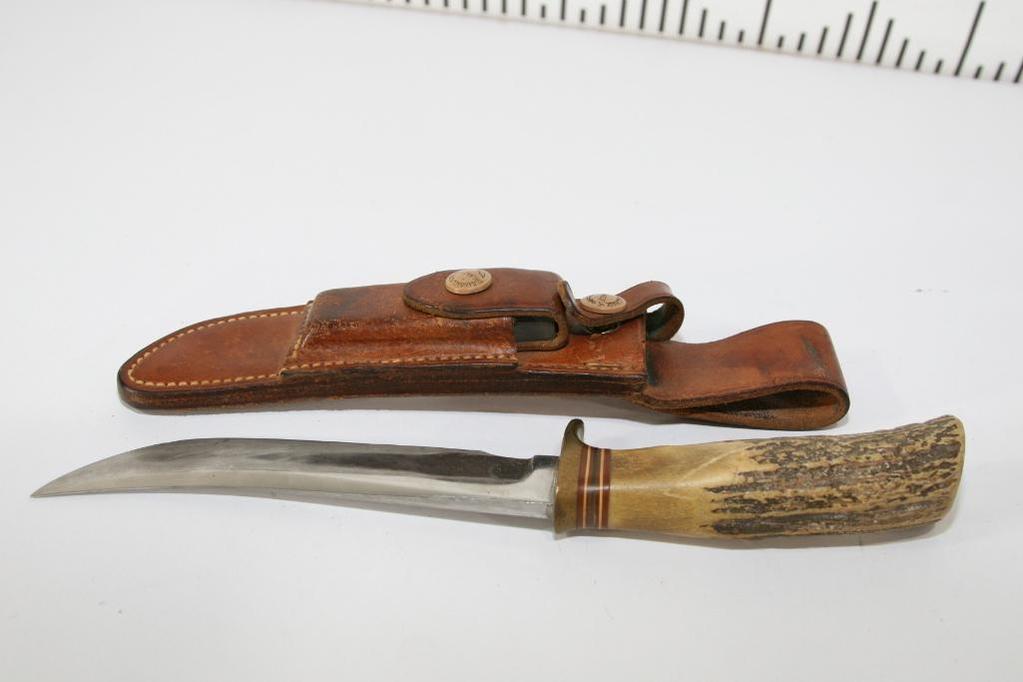I've always wanted a vintage Randall that I could use and enjoy while hunting and camping without ruining a fine collectible. I didn't want a brand new production knife. Just got this one from auction last night. I probably paid too much based on condition ($425) and could have bought a shiny new one for the same or less, but that wasn't what I wanted.
Now I have a bunch of questions for the Randall experts!
-Best guess as to year of production?
-I think it's a Model 4 Big Game and skinner? Blade measures right at 6". Handle is stag. Can you verify?
-How do I best preserve the sheath leather?
-Should I get a new production sheath from Randall and shelf the original?
-Should I send it to Randall for cleanup or should I work the scratches from poor sharpening attempts out of the blade myself?
Thanks for any help and insight!
(



Now I have a bunch of questions for the Randall experts!
-Best guess as to year of production?
-I think it's a Model 4 Big Game and skinner? Blade measures right at 6". Handle is stag. Can you verify?
-How do I best preserve the sheath leather?
-Should I get a new production sheath from Randall and shelf the original?
-Should I send it to Randall for cleanup or should I work the scratches from poor sharpening attempts out of the blade myself?
Thanks for any help and insight!
(



